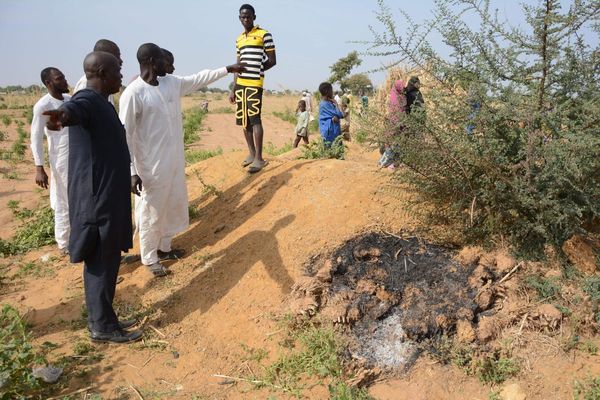

Particularly common in the west Amazon, this palm tree grows hard fruits with a soft, coloured centre that are eaten by animals including toucans, tapirs and spider monkeys. The stem of the spine has a prominent bulge, giving rise to its common name 'barrigona' – meaning 'potbellied'. The tree grows up to 30 metres tall with medium-sized stilt roots measuring up to 60cm. It is present in terra firme – parts of the forest with solid ground – and its wood is used to make floors and house walls in the rainforest. There are more than 4 billion in the Amazon basin Photograph: Abel Monteagudo Mendoza

This palm is thought to be the most common tree in the Amazon rainforest. There are 5.2 billion Euterpe precatoria trees spread throughout the basin, according to estimates in the recent study. The 20m tree, commonly known as 'huasaí' and 'palmito' in Peru, and 'asaí' in Colombia, is usually found in flooded parts of the forest. Among indigenous communities, the berries are often served with ice cream, tapioca or chocolate Photograph: Abel Monteagudo Mendoza

These single-trunk palm trees have spines on the trunk, and are found in primary and secondary forests, upland forests and seasonally flooded forests. The trees grow up to 15 metres tall, and their fruit and leaf buds are edible. Their hard seeds can be used to make shiny, pitch-black rings, and the seeds also contain a soft substance inside, which is used to make cosmetic creams such as “murumuru butter”. The Hyperdominance paper suggests there are more than 2.4 billion Astrocaryum murumuru trees in the Amazon rainforest Photograph: Abel Monteagudo Mendoza

The palms of palla trees have been used for making thatched roofs from the earliest days of people living in the rainforest. Indigenous people use the traditional method in many regions of the rainforest, and the sturdy leaves can last from five to 10 years. When cooked, the tree’s seeds produce a milky, chocolatey substance rich in antioxidants. There are about 1.8 billion across the whole basin Photograph: Roel Brienen

Often known simply as the 'rubber tree', Hevea brasiliensis produces a creamy white latex – which was central to the Amazon rubber boom in the late 19th and early 20th century. The tree’s rubber helped the Amazon achieve a world monopoly, leading to the growth of cities like Manaus, Brazil, and Iquitos, Peru, until the UK began to grow the seed in its colonies in Malaysia and Sri Lanka. The rubber trade also brought a lot of unhappiness to indigenous people, who were forced to work by rubber barons. The tree grows up to 40m tall, and there are more than 1.9 billion across the Amazon Photograph: Alamy

The 'walking palm' has an unusual appearance: its 20-metre tall trunk is supported by long, stilt-like roots, measuring up to 1.5m. It takes it’s Tolkien-esque name from a theory that its stilt-like roots allow it to move through the forest by a few centimetres, with new roots growing towards sunlight as they replace old ones. But some scientists have disputed this theory, saying individual roots may be replaced but the tree’s thorny, grey stem stays rooted in the same place. There are about 2.7 billion of these throughout the rainforest, and their wood is widely used for flooring in Amazonian houses Photograph: Kyle Dexter /University of Edinburgh







